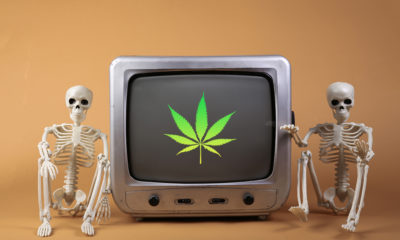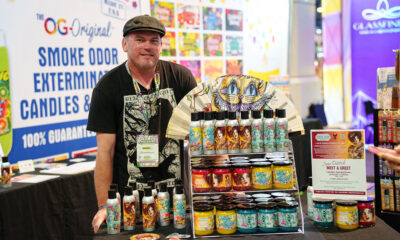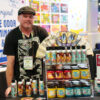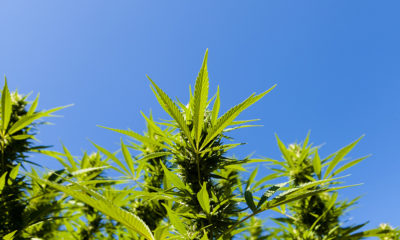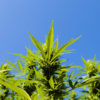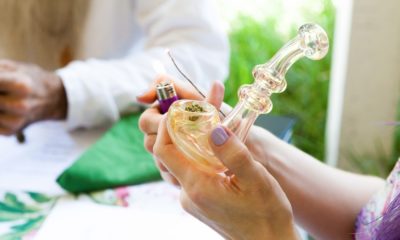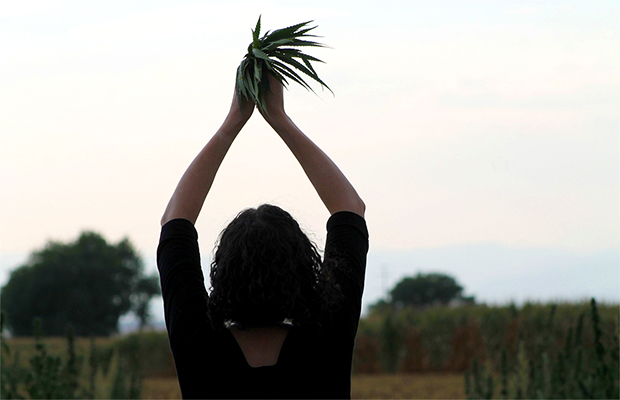
Cannabis
New Documentary Explores Women Power Behind Cannabis
In her new documentary “Mary Janes: The Women of Weed”, director Windy Borman profiles the female gajapraneurs addressing the complex issues in the cannabis movement.
From racial disparities in marijuana arrests to cannabis’ classification as a Schedule I drug, this diverse group of women plays an active role in these debates.
Borman even gives them their own special name: Puffragettes. As in “pot” plus “suffragette”.
For the film, Borman traveled from D.C. to California to interview doctors, chefs, policymakers and job recruiters. (Jane West and Jazmin Hupp of Women Grow both make appearances.) Before she is done with production, Borman wants to hit up a few more states during the election cycle.
Borman is currently raising money with an Indiegogo campaign, which runs through Oct. 2, and took some time to talk to Cannabis Now about telling the story of the cannabis movement through a female lens.
Cannabis Now: How much did you know about the cannabis movement and industry before you set out to make this film?
Borman: I knew very little about the cannabis industry before I started producing “Mary Janes”. I’ve always been intrigued by social issues, especially gender equality, social justice, environmental protection, education, and empowerment. When I moved to Colorado in 2014 — the same year recreational use of marijuana became legal — and started meeting successful women in the weed business, I knew I was perfectly positioned to share these female entrepreneurs’ stories and inspire domestic and global audiences about how gender parity, social justice, and environmental sustainability lead to greater success for all.
When and why did you decide that women in weed was a worthy documentary topic?
According to a recent Marijuana Business Daily study, women hold 36 percent of leadership positions across the marijuana industry. The national average is 22 percent, so cannabis has the highest amount of gender parity in any industry in the United States.
Secondly, women purchase over 50 percent of movie tickets, yet represent only 30 percent of Hollywood speaking roles. This is true for cannabis films too. Isn’t it time we had a cannabis film where women get to speak about their experience?
Next, High Times reported that women account for 40 percent of annual cannabis users, according to the most recent National Survey on Drug Use and Health. This means there were 13.1 million women in the United States who used cannabis in 2015. Women also drive 70-80 percent of all consumer purchases. This is a huge market share.
Finally, women are creating businesses that instill corporate responsibility into the foundation of the cannabis industry. Showing this side of the industry is a realistic counterpoint to the other media that have focused on the “stoner” image, vaults of cash, or scantily clad women as arm candy.
Bottom line: It just made sense to produce a film about women in the cannabis industry to shape the national cannabis conversation.
How did you find your Puffragettes? Who are some of the stand-outs in this group?
I started researching the “women of weed” by reading and watching as much as I could. I reached out to over 100 female ganjapreneurs, received referrals from Women Grow and other organizations, and gradually started narrowing the cast down to 40 women who could show a broad cross-section of the types of women in the cannabis industry, and who could also speak to at least one of our core values: gender parity, social justice, and environmental sustainability.
Our Puffragettes include Betty Aldworth, Dr. Lakisha Jenkins, Jaime Lewis, Genifer Murray, Sara Batterby, Jane West, and Jazmin Hupp, as well as representatives from Drug Policy Alliance, Marijuana Policy Project, NORML, and the National Cannabis Industry Association.
Are there any films (or other types of media) that influenced “Mary Janes” thematically or aesthetically?
There is an abundance of documentaries about marijuana, and yet, we feel the previous films about cannabis have left out one very important perspective: Women. I knew that if I produced a film about women in the cannabis industry, then I needed to show the audience a perspective they’ve never seen before. In some ways, you can describe the film as a mash-up of “Miss Representation” meets “Weeds”, but my hope is that the film finds a broader audience than cannabis users, one that includes the canna-curious and proponents of a corporate responsibility in general.
Cannabis laws are always in flux, and a number of states may potentially legalize recreational marijuana in a little over a month. Will that impact the completion of “Mary Janes” in any way?
The climax of “Mary Janes” will be filming our Puffragettes on Election Night in California and Massachusetts. Each state could be a game changer in its own right — and we may have the first female president. Not only is this timely to document for the film, but it will also become a legacy piece for the future of the Puffragette movement.
What did you personally learn about the cannabis movement and industry by making this film?
The conversations around cannabis legalization are vastly different in each state. Some still think cannabis is a “gateway” to addiction, so why would they legalize it when then have heroine and meth epidemics? Others are so comfortable with a “medical” market, they needed convincing that adding “adult use” legalization was the best way to end the racist drug war, while still protecting the local growers.
Cannabis legalization is going to be a state-by-state fight until the federal government relents and finally ends prohibition.
Are you a Puffragette? Tell us about your experiences the cannabis business.







